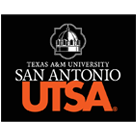Document Types
Individual Presentation
Start Date
2-24-2024 2:40 PM
End Date
2-24-2024 3:00 PM
Track
Culture and Pedagogy
Abstract
Spanish heritage language (SHL) programs at the secondary level lack a set of standards that address the linguistic, social, affective, and professional needs of students (Potowski & Carreira 2004) and guide the curricular decisions of administrators and teachers. While several curricular proposals currently exist for post-secondary education (e.g., Beaudrie, Amezcua, & Loza, 2021), these are not always easily adaptable or applicable in a secondary school program and can be perceived by secondary teachers as a top-down imposition disconnected from their reality. To address this need, our project engaged researchers, high-school teachers, and administrators in a long-term initiative aimed at: a) training and empowering teachers to become leaders in SHL curricular initiatives at the school and district level, b) supporting the design of an SHL curriculum that incorporates students’ voices and teacher’s experiences, c) piloting and revising the curriculum based on teachers’ and students’ feedback, and d) facilitating a conversation about SHL standards from a bottom-up perspective, moving from the local reality in the classroom towards a generalizable set of benchmarks. We grounded our work in the idea that a comprehensive understanding of SHL identity development (including linguistic, affective, social, and individual dimensions) could translate into an SHL curriculum, teaching materials, and classroom practices that address racial-ethnic self-schemas (Oyserman et al., 2003; Rosa, 2019), define clear and adequate language learning goals (Booth, Huerta, & Thomas, 2018; Parra, 2016), consider not only the students’ past experiences with the language and culture but also the demands and expectations of contexts beyond the classroom, and engage learners in activities and projects that involve self-expression, community engagement, and identity negotiation (Suarez-Orozco, 2001; Trueba, 2002; Beaudrie, 2009). In this presentation, we discuss each step of the project, addressing their theoretical underpinnings, current achievements, and areas for improvement, to foster a broader discussion beyond our local context.
Recommended Citation
Torrubia Gortari, Isabel; Wrightson, Maureen; and Gironzetti, Elisa, "Towards SHL Benchmarks from the Bottom-Up: High-School Teachers as Curriculum Designers" (2024). 11th National Symposium on Spanish as a Heritage Language. 26.
https://digitalcommons.tamusa.edu/heritage_spanish/SCHEDULE/Saturday/26
Included in
Bilingual, Multilingual, and Multicultural Education Commons, Curriculum and Instruction Commons, Language and Literacy Education Commons, Spanish and Portuguese Language and Literature Commons
Towards SHL Benchmarks from the Bottom-Up: High-School Teachers as Curriculum Designers
Spanish heritage language (SHL) programs at the secondary level lack a set of standards that address the linguistic, social, affective, and professional needs of students (Potowski & Carreira 2004) and guide the curricular decisions of administrators and teachers. While several curricular proposals currently exist for post-secondary education (e.g., Beaudrie, Amezcua, & Loza, 2021), these are not always easily adaptable or applicable in a secondary school program and can be perceived by secondary teachers as a top-down imposition disconnected from their reality. To address this need, our project engaged researchers, high-school teachers, and administrators in a long-term initiative aimed at: a) training and empowering teachers to become leaders in SHL curricular initiatives at the school and district level, b) supporting the design of an SHL curriculum that incorporates students’ voices and teacher’s experiences, c) piloting and revising the curriculum based on teachers’ and students’ feedback, and d) facilitating a conversation about SHL standards from a bottom-up perspective, moving from the local reality in the classroom towards a generalizable set of benchmarks. We grounded our work in the idea that a comprehensive understanding of SHL identity development (including linguistic, affective, social, and individual dimensions) could translate into an SHL curriculum, teaching materials, and classroom practices that address racial-ethnic self-schemas (Oyserman et al., 2003; Rosa, 2019), define clear and adequate language learning goals (Booth, Huerta, & Thomas, 2018; Parra, 2016), consider not only the students’ past experiences with the language and culture but also the demands and expectations of contexts beyond the classroom, and engage learners in activities and projects that involve self-expression, community engagement, and identity negotiation (Suarez-Orozco, 2001; Trueba, 2002; Beaudrie, 2009). In this presentation, we discuss each step of the project, addressing their theoretical underpinnings, current achievements, and areas for improvement, to foster a broader discussion beyond our local context.

